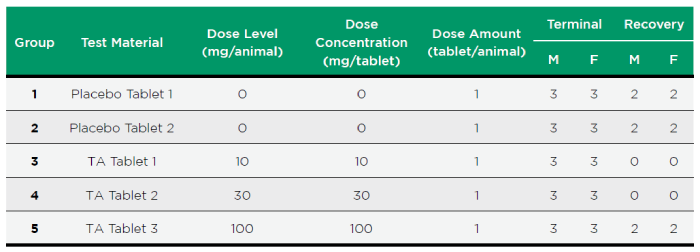Case Study: How Altasciences Overcame Pharmacological Challenges in a GLP-1 IND-Enabling Study
For emerging therapies with pronounced pharmacological effects, thoughtful study design is critical to ensuring reliable and interpretable data.
In preclinical studies, the same effects that make GLP-1 receptor agonists (RA) effective treatments for appetite suppression and weight loss, can often become obstacles—complicating the evaluation of toxicological outcomes during preclinical development. These therapeutic goals are essential in clinical practice for addressing obesity and type 2 diabetes.

Altasciences was chosen by a client for an IND-enabling study of a small-molecule GLP-1 receptor agonist in canines. And in this case study, we demonstrate how we used a proactive strategy to establish a clear differentiation between anticipated pharmacological responses and potential safety-related findings and to provide the client with high-quality toxicology and pharmacokinetic data crucial for their IND submission.
The Pharmacological Challenges of GLP-1 Treatments
GLP-1 RA molecules are known to decrease gastric emptying and increase satiety. They also inhibit the release of glucagon from pancreatic alpha cells which results in decreased sugar liberation and production in the liver. With decreased gastric emptying and increased satiety, a common pharmacological effect observed when conducting these studies is a decrease in food consumption and body weight loss.
This presents a challenge when evaluating the test article for potential toxicological effects, since the test article is designed to produce decreased food consumption and body weight loss. Consequently, maintaining the health of the animals and completing the 28-day study become important considerations.
GLP-1 Preclinical Study Design and Methods
To evaluate systemic toxicity and toxicokinetic characteristics of the GLP-1 RA test article and potential reversibility of any findings, we designed an IND-enabling study that included:
- a robust dosing schedule of daily oral administration for 28 days;
- a large sample size incorporating 21 canines per sex across five dose groups;
- comprehensive monitoring (from ECGs and ophthalmology to clinical pathology and full necropsy); and
- a unique dietary strategy to mitigate the drug’s expected effects on appetite and weight.
The canines were dosed once daily for 28 days via tablets with a water flush to ensure administration. Standard toxicological observations and measurements were performed over the course of the study, including detailed clinical observations, body weights, food consumption, ophthalmic examinations, electrocardiograms, clinical pathology, and anatomic pathology.

Complete necropsies were conducted on Day 29, and standard organ weights were recorded. A full set of tissues were collected from all animals, processed to slide, stained with hematoxylin and eosin (H&E), and evaluated by Altasciences’ board-certified veterinary pathologist.
The Results
The research animals were given a non-standard dietary regimen. This consisted of a certified canine diet of dry and canned wet food that contained a higher composition of fat and protein—beginning during the acclimation period and continuing throughout dosing. This elevated baseline body weight and helped buffer against anticipated losses and pharmacological effect, allowing the research animals to complete the study without requiring dose holidays or protocol adjustments.
As expected, food intake and body weight decreased in a dose-dependent manner—approximately 4%, 10%, and 14% at increasing dose levels. Even with these pharmacological effects, all animals remained clinically stable and completed the full 28-day dosing regimen, enabling uninterrupted data collection for all core toxicological endpoints.
Altasciences collected and analyzed a comprehensive panel of data throughout the study period, including neurological assessments, ophthalmology, electrocardiography, and full histopathological review post-necropsy. With no dose interruptions or compromised animal health, systemic toxicity and toxicokinetics could be properly evaluated without confounding variables, crucial for the client’s IND submission.
Altasciences’ Preclinical Approaches to GLP-1 RA Development
Preclinical studies for first generation GLP-1 RA therapeutics for treatment of diabetes have generally been standard GLP studies, conducted with normal-weight animal models. Animal models of obesity have come into play during the preclinical efficacy studies for GLP-1 RA drug development, and high-fat diets are commonly used to induce obesity in animals for studies in certain therapeutic areas, including GLP-1 RA development. Such diets can increase body adiposity and leptin, and encourage the development of hypertension and glucose intolerance, leading to conditions of human-like obesity.

As with all studies performed by Altasciences, these investigations are conducted in compliance with strict ethical standards, including Good Laboratory Practice (GLP) guidelines and institutional animal care protocols to ensure humane treatment and meet regulatory requirements.
Are you planning an IND-enabling or early clinical study for a GLP-1 therapeutic? Get in touch today to get started with Altasciences.
This blog was originally published in April 2025.



